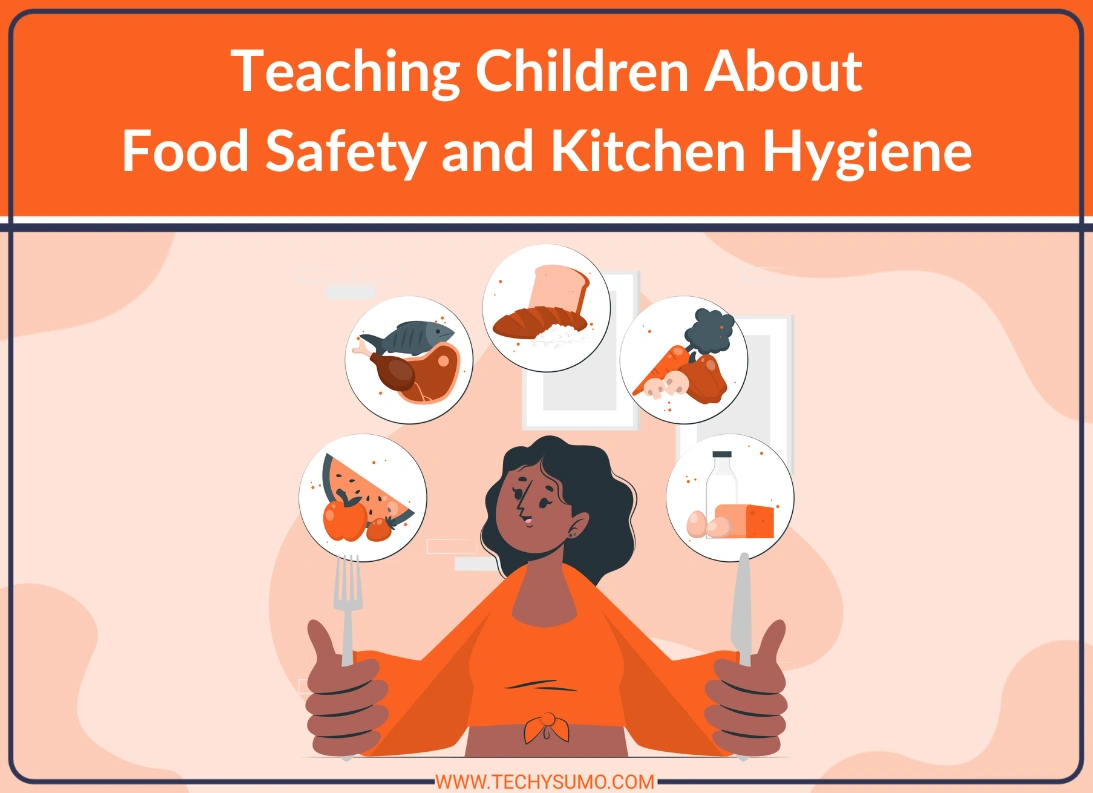Getting children involved in the kitchen creates wonderful memories and teaches valuable life skills. Many parents and carers worry about safety when little hands want to help with cooking. But you can teach children about food safety and kitchen hygiene whilst making the experience enjoyable for everyone. It’s actually quite straightforward.
Table of Contents
Starting with the Basics: Hand Washing
Clean hands form the foundation of kitchen safety. Make hand washing fun by teaching children the “Happy Birthday” song rule – scrub hands thoroughly whilst singing the song twice through. This ensures they wash for the recommended 20 seconds. Simple but effective.
Show children how to wash between their fingers, under their nails, and around their wrists. Explain that germs are invisible but can make people poorly. You might demonstrate this using glitter on their hands. They’ll see how it spreads to everything they touch until properly washed off. The visual impact is quite striking.
Create a routine where everyone washes hands before entering the kitchen. This becomes second nature when practised consistently. Foster carers often find that children respond well to clear, consistent rules that apply to everyone in the household. No exceptions works best.
Safe Food Handling Techniques
Children love feeling responsible and helpful. Give them age-appropriate tasks that teach proper food handling. Younger children can wash vegetables under running water or sort ingredients. Older children can learn about checking use-by dates and storing different foods correctly.
Also Read
Teach the golden rule – keep raw meat separate from everything else. Show children which chopping boards to use for different foods. Many families use colour-coded boards, so red for raw meat, green for vegetables, and blue for fish. This visual system helps children remember the rules without constant reminders.
Explain why we don’t taste raw cake mixture or cookie dough anymore. Whilst disappointing, this protects against harmful bacteria that might be present in raw eggs or flour. Offer safe alternatives like letting them lick the spoon from finished icing.
Temperature Control and Storage
Teaching children about temperature doesn’t require complex explanations. Start with simple concepts they can understand. Hot food should stay hot, cold food should stay cold. Show them how to check if the fridge feels cold when they open it.
Let children help pack the shopping away, explaining why some foods go in the fridge whilst others stay in cupboards. They’ll quickly learn that milk, cheese, and yoghurt need to stay cold. Bread and biscuits can live in the pantry. Most children pick this up within a few shopping trips.
Kitchen Equipment Safety
Sharp knives and hot surfaces naturally concern parents. Yet children can learn to respect kitchen equipment whilst still participating in cooking. Start by showing them which items are completely off-limits and which they can use with supervision. Clear boundaries help.
Child-safe knives with rounded tips allow them to practice cutting soft foods like bananas or mushrooms. Teach proper knife technique, with fingers curved away from the blade, and the cutting board stable on the counter. They’ll feel proud mastering these grown-up skills safely. Confidence builds gradually.
Discuss hot surfaces and steam dangers. Show children how pot handles should face inward to prevent accidents. Teach them to assume all surfaces near the cooker are hot unless told otherwise. If you foster children with an agency like Foster Care Associates, creating safe environments where children can learn and explore confidently is extremely important.
Making Hygiene Habits Stick
Children respond well to routines and clear expectations. Create kitchen rules that everyone follows. Perhaps establish “clean as you go” practices where surfaces get wiped after each task. This prevents mess from building up and reinforces hygiene habits. It’s much easier than facing a huge cleanup later.
Consider appointing children as “kitchen safety inspectors” for the day. They can check that everyone washes hands, surfaces stay clean, and ingredients get stored properly. This responsibility makes them feel important whilst reinforcing the lessons. Children take their inspector duties seriously.
Age-Appropriate Responsibilities
Three-year-olds can wash vegetables and tear lettuce leaves. Seven-year-olds might grate cheese or measure ingredients. Teenagers can handle most kitchen tasks with minimal supervision. Adjust your expectations based on each child’s maturity and capability rather than just their age. Individual differences matter more than arbitrary age limits.
Preparation for Independent Living
Teaching food safety and kitchen hygiene prepares children for independent living whilst creating positive associations with cooking. These skills serve them throughout their lives. Whether they’re making simple snacks or preparing elaborate family meals doesn’t matter.
Most importantly, you’re showing children that the kitchen can be a safe, enjoyable space where families come together. That’s worth the effort.






